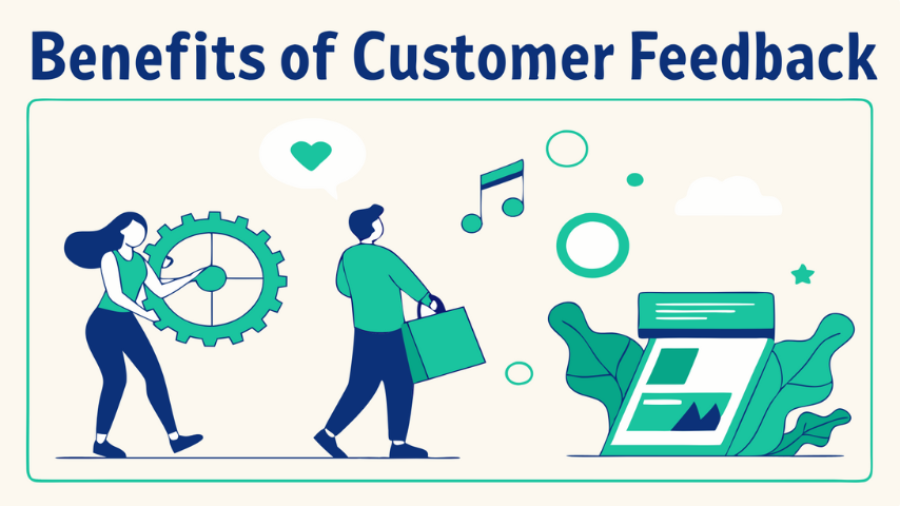Feedback is the cornerstone of growth, improvement, and successful relationships in both personal and professional contexts. Whether it’s in business, education, or personal development, understanding the purpose of effective feedback is crucial for creating meaningful change and fostering continuous improvement. In this comprehensive guide, we’ll explore why feedback matters and how it can transform organizations and individuals alike.
Understanding the Fundamental Purpose of Feedback
At its core, feedback serves as a powerful tool for communication and development. It creates a bridge between current performance and desired outcomes, helping individuals and organizations identify areas for improvement while reinforcing successful behaviors. Effective feedback is not just about pointing out flaws; it’s about creating a dialogue that promotes growth and understanding.
The Cycle of Continuous Improvement
Feedback operates as part of a continuous cycle:
- Performance or action takes place
- Feedback is provided and received
- Reflection and analysis occur
- Changes are implemented
- New performance or action follows
- The cycle begins again
This ongoing process ensures that individuals and organizations don’t stagnate but continue to evolve and improve over time.
Key Elements of Effective Feedback
To truly serve its purpose, feedback must possess certain essential characteristics:
Timeliness
Feedback should be provided as close to the event or behavior as possible. This ensures that:
- Details are fresh in everyone’s mind
- Changes can be implemented while relevant
- Learning opportunities aren’t lost to time
- Momentum for improvement is maintained
Specificity
Generic feedback rarely leads to meaningful change. Effective feedback must:
- Point to specific behaviors or actions
- Provide concrete examples
- Offer clear guidance for improvement
- Include measurable elements when possible
Constructiveness
The manner in which feedback is delivered significantly impacts its effectiveness. Constructive feedback:
- Focuses on behaviors rather than personality
- Offers solutions alongside criticism
- Maintains a positive, growth-oriented tone
- Encourages dialogue and discussion
The Benefits of Customer Feedback in Business Growth
One of the most valuable sources of feedback comes from customers. The benefits of customer feedback extend far beyond simple quality control:
Product Development and Innovation
Customer feedback drives product evolution by:
- Identifying pain points and areas for improvement
- Suggesting new features or modifications
- Validating or challenging assumptions
- Informing product roadmap decisions
Enhanced Customer Experience
Regular feedback collection and implementation leads to:
- More personalized service delivery
- Improved customer satisfaction
- Stronger customer relationships
- Reduced customer churn
Competitive Advantage
Organizations that actively seek and utilize customer feedback gain:
- Better market understanding
- Faster response to changing needs
- Increased customer loyalty
- Enhanced brand reputation
The Role of Feedback in Professional Development
Employee Growth
Effective feedback in the workplace:
- Clarifies performance expectations
- Identifies skill gaps
- Guides career development
- Boosts employee engagement
Team Dynamics
Regular feedback within teams promotes:
- Better communication
- Increased collaboration
- Improved conflict resolution
- Enhanced productivity
Common Challenges in Feedback Implementation
Understanding these challenges helps organizations better prepare for feedback initiatives:
Resistance to Feedback
Many individuals struggle with:
- Fear of criticism
- Defensive reactions
- Lack of trust in the feedback process
- Difficulty accepting different perspectives
Poor Delivery Methods
Ineffective feedback often results from:
- Lack of preparation
- Unclear communication
- Inappropriate timing
- Missing follow-up
Best Practices for Implementing Feedback Systems
Creating a Feedback Culture
To establish an effective feedback environment:
- Make feedback a regular practice
- Train people in giving and receiving feedback
- Celebrate improvements and learning
- Model openness to feedback at all levels
Structured Feedback Processes
Implement systematic approaches through:
- Regular feedback sessions
- Clear feedback frameworks
- Documentation of feedback and outcomes
- Consistent follow-up procedures
The Impact of Technology on Feedback
Modern technology has transformed feedback collection and implementation:
Digital Feedback Tools
Contemporary organizations utilize:
- Online surveys and forms
- Real-time feedback applications
- Analytics and tracking systems
- Automated feedback collection
Data-Driven Insights
Technology enables:
- Pattern recognition in feedback data
- Predictive analysis
- Automated response systems
- Comprehensive reporting
How often should feedback be given?
Feedback should be provided regularly, with formal feedback sessions occurring at least quarterly. However, informal feedback should be ongoing and given as soon as notable situations arise.
What makes feedback effective?
Effective feedback is specific, timely, constructive, and actionable. It should focus on behaviors rather than personalities and include both positive observations and areas for improvement.
How can organizations encourage honest feedback?
Organizations can promote honest feedback by:
- Creating psychological safety
- Maintaining confidentiality when appropriate
- Demonstrating that feedback leads to actual changes
- Recognizing and rewarding valuable feedback
What’s the difference between constructive and destructive feedback?
Constructive feedback focuses on improvement and growth, while destructive feedback is personal, vague, and doesn’t provide actionable solutions.
Conclusion
The purpose of effective feedback extends far beyond simple evaluation or criticism. It serves as a vital tool for growth, improvement, and success in both personal and professional contexts. Whether through formal channels or informal conversations, feedback helps individuals and organizations identify strengths, address weaknesses, and move toward their goals with greater clarity and purpose.
The benefits of customer feedback, in particular, demonstrate how valuable external perspectives can be in driving meaningful change and improvement. As organizations continue to evolve in an increasingly competitive landscape, those that master the art of giving and receiving feedback will find themselves better positioned for sustained success.
Remember that creating an effective feedback system is an ongoing process that requires commitment, practice, and continuous refinement. By understanding and implementing the principles outlined in this guide, organizations and individuals can harness the full power of feedback to drive positive change and achieve their objectives.
